#T. E. Shaw
Explore tagged Tumblr posts
Text












compilation of T. E. Lawrence/Shaw images where only half of his face is visible (side profile)
#Reason?#Just 'cuz#Also I feel like this would do good to someone#lawrence of arabia#t e lawrence#t.e. lawrence#t e shaw#t. e. lawrence#t. e. shaw#ww1 history#history#photographs#old photographs#old photo
48 notes
·
View notes
Text
I was going to read the next Dune book once I figured out which one it was, when I realized I still hadn't read the original. In Seven Pillars of Wisdom, Thomas Edward Shaw (né Lawrence) narrates his experiences of the Arab Revolt as a participant of the British mission to it. The testimony ranges from routine to highly implausible, but so long as you don't actually believe any of the claims he makes, it makes for an interesting read.
There are five major elements the author blends and transitions between quite seamlessly. The most common is descriptions of the geography of Arabia. As all physical descriptions, this does extremely little for me, but could be of interest to people with visual imaginations.
There is also a fair bit of reporting of both details and general principles of guerilla warfare. As with all texts about guerilla warfare, the principles are incredibly simple. Volunteer forces are even more dependent on morale than usual, the most important principle is to conserve forces, the function of guerilla warfare is ersatz strategic depth, and some way or another you should try to slowly compose a regular force in a location protected by your guerilla strategic depth because you don't want to fight a guerilla war if you don't really really have to. This can all be found in any of the major texts, while the applications and local contexts are all fiendishly complicated and non-transferable.
The author also spends a great deal of time racially characterizing the Semite, and more rarely anyone else he happens to run into. Very unpleasant stuff, but arguably useful as a reminder of just how racist people were about a hundred years ago. But while the racists certainly have gotten a lot more subtle, the substance of the arguments is entirely unchanged. As always, it is almost entirely characterizing obvious cultural adaptations and socio-economic phenomena as being instead genetically encoded, and a pathetic sense of superiority.
Sexuality occupies a fascinating amount of space. I won't try to puzzle out the author's, since he mostly doesn't see fit to share it, but I will note that he is on balance neutral towards homosexuality, and viscerally opposed to heterosexuality, and doesn't appear to consider women's sexuality at all. Mostly it seems like he hates and disdains women, and consequently considers straight sex undignified and condescending at once, like bestiality. But when he's not being a massive piece of shit, he can be quite endearingly tender about homosexuality. Or disquietingly bizarre.
Finally, the author has a mortification of the flesh and scrupulosity OCD problem the size of Jupiter. This manifests in very weird ways, and was certainly not helped by the whole attempted rape and torture thing, or the several years of deceiving his friends to best subjugate them to an empire he definitely still likes but also definitely understands it is not actually nice to be subject to. Others might think the arguably pathological mentalities are the result of these experiences, but I think it's more likely part unfortunate coincidences and part self-fulfilling prophecy.
Returning to the joke from the beginning, Dune obviously does owe a lot to Seven Pillars. Some of the pathologies even rhyme - both obsessed with genetics but in Dune it shows up with a far more individualist bent, partly because it's American but mostly because it's a fantasy novel with a protagonist. Also Dune/Seven Pillars forces you to spend a lot of time trying to figure out what exactly is wrong with Frank Herbert/Thomas Shaw. Oh and the misogyny, though Herbert is terrified where Shaw is dismissive. The big difference is Herbert is a massive homophobe. 50 years of social progress, everyone!
#book report#Seven Pillars of Wisdom#T. E. Shaw#T. E. Lawrence#Dune#Frank Herbert#I've been collecting funny lines that are emblematic of these themes but they won't fit in the margin of this post sorry
7 notes
·
View notes
Text

Now I'm drawing again but it's the first time that I draw LoA (Little Ned)🐪
(Don't ask me a masterpiece)
9 notes
·
View notes
Text
Oh hey is that my fandom from a decade ago rising up to meet me?
****
The Portrait Is Watching You
On TE Lawrence and the folly of biography
A dear friend once declared, “I want to see you write a book on why SOME people shouldn’t write about Lawrence…”
“NOBODY should be writing about Lawrence!” I interjected.
“...didn’t you JUST write a story about him?”
“YES!” I have, in fact, written a few.
It is an almost irresistible temptation, because TE occupies such a sparkling place in history and art that, entirely apart from any quirks of his personality he would already be a prime target for examination by all and sundry. Add to this all the buttons and questions of his identity - heroism, failure, friendliness, isolation, queerness, kink, trauma - the first instinct of even the most casual critic is to find out some aspect that nobody has puzzled out so well, and in doing so claim a piece of him for England for oneself.
This is not to say all his eager biographers LIKE him. Indeed, in puzzling out the pieces, Richard Aldington first and famously despised what he discovered, to the point of attempting to dodge the accusation of libel by labeling his book “A Biographical Enquiry” - he’s just asking questions, folks. I keep a quote from said book on my desktop:
The irregular situation of a father who had four daughters by his wife and five sons (of whom TE Lawrence was the second) by another woman is obviously the clue to Lawrence’s abortive career and tortured character. Of course the fact must not be abused and dragged in to explain everything -
The image of that quote is very fondly named “fuck you too Aldington.jpg” by the bye. I harbor a cherished hope someday to have the works of Aldington and Lowell Thomas on my shelf, bound together in caution tape. They are very much two sides of a coin.
Lowell Thomas made a name for himself as a sort of adventuring journalist. He wrote about the joys of travel and was paid in free tickets by rail companies for the advertisement. All places he went were exotic, all people he met extraordinary. The man was made for the propaganda machine, and while it was useful, TE used it. And when it ceased to be useful, TE tried to refuse it and Lowell Thomas refused to understand. Lowell Thomas had his own piece of Lawrence - in some ways, the first one. A flattering one? The first chapter of With Lawrence In Arabia is, after all, titled “A Modern Arabian Knight.” The second, worse, calls TE “The Uncrowned King of Arabia.”
I am always reminded, in these and the awfully orientalist captions of Thomas’s photographs, of a story told by Sheikh Hamoudi in Lawrence By His Friends. Hamoudi was surprised by the request for tales about TE because he hadn’t known yet that he was dead, so there’s a terrible sort of shocked sadness in his chapter of the book. He recalled going with TE to his home in Oxford before the war, along with Selim Ahmed, known as Dahoum. As a foreigner relying on the native TE for translation, he observed the excitement of people who came to talk with them, and that TE was repeatedly smiling and saying “No” to people requesting something. On interrogation, TE revealed that these people wanted to pay for photographs - they wanted to pay a great deal, apparently. Hamoudi challenged him for refusing, and TE Lawrence challenged him right back, saying it would make them a monkey and the man displaying that monkey for the public.
TE Lawrence knows what you are doing with him. He knows the shape of history, his story, the narrative built around him. He knows it’s happening, that there’s no way to stop it, that there’s hardly any point in trying to guide it, but he’s trying to guide it all the same. He is watching you, from the past, take him and reshape him into a piece of art that you can own.
“Poor Joan, I was thinking of her as a person, not as a moral lesson,” TE says, to Charlotte Shaw, defending his distaste in the ending of GB Shaw’s Saint Joan. In two consecutive letters, TE contrasts the play - turning away from Joan’s suffering to the reflection of the fire on the faces of her tormentors - with his own work specifically describing his torture at Deraa. Whatever else one might take from this, not the only time TE expressed fellow feeling for the sufferings of a female protagonist, I am inclined to hear him saying this: “Poor me, I was a person, now I’m a moral lesson.”
It’s easy to summon some righteous response to Aldington, and indeed he sparked a fury of refutations and qualifications and publications of previously withheld documents in TE’s defense. Fewer are thinking of defending Lawrence from With Lawrence in Arabia, but Lowell Thomas’s work has its own broad spreading ripples of effect, images of Lawrence in pure white, the archetype of the White Savior, larger than life (better put Peter O’Toole in the role, at nearly a foot taller than TE himself, he has the stature for it.) Most biographers position themselves to be less sensational, less confrontational than these.
I find myself, after a decade of not writing this ode to the folly of writing about Lawrence, falling into the trap in the footsteps of a much more reasonable writer. Edward Said, wonderfully, wrote a scathing response to Knightley and Simpson’s The Secret Lives of Lawrence of Arabia. Like Aldington, these sensationalist biographers did meticulous research but made extraordinary claims on it, and Said wisely declares that it is folly to pinhole Lawrence as anything. Said declares that Lawrence can only be pinned down as a man who wouldn’t be pinned down to anything. Defiant against definition, to the end, as a defining trait.
I like this. I especially like, in it, the face of Lawrence studying the portraits made of him, figuring out who exactly is being depicted there. TE did find his image very interesting, and talked about various incarnations of it like they were people he was watching, to find out how they tick. Among the accusations that have been leveled against him, one of the strongest is that he was a social chameleon, wearing the personality expected of him in every context.
I like how Said mentioned TE’s home at Clouds Hill, treated as a generally owned space rather than a possession of TE as host and owner. Said could not resist also saying this was an aspect of TE claiming and then refusing everything that came into his hands. It might be. Said might have the right of it.
But I think all we eager writers carry too much of ourselves into the space of this particular chameleon, so he takes on the colors we place as his backdrop. I know a few people who remind me of TE - a dear friend struggling with scrupulosity OCD, another who is trying his best to catalogue the behaviors and motivations of his own neurodivergence by watching other people, a third who is awkward and brilliant and eager to share everything he knows and has nobody, really, to talk to. The TE I would write would look an awful lot like them.
The TE I would write would be wonderfully human, giving Charlotte Shaw a full description of the eating habits of a cat he gave an eclair, doing her husband the hilarious disservice of legally taking his name when GB Shaw said it troubled him as much as Lawrence must trouble TE, forcing GB to tell people that TE was not his son for the rest of his life - but I am that terrible fool of fools, a fan. I’m the worst of all to write about TE Shaw, that little shit.
7 notes
·
View notes
Text

something something terror twins something something guys being dudes
#styxposting#styx#james jy young#tommy shaw#i recycled this from a steve and phil edit i made YEARS ago bc these two are t h e s a m e as them but somehow gayer
13 notes
·
View notes
Text
for everybody's glee I've got more pain coming
4 notes
·
View notes
Text
"The best fantasy audiobooks for adults sweep readers away with deft narration. I cannot recommend them more for fun listening.
Audiobook sales have skyrocketed over the last five years. As of 2023, audiobook revenue grew to $2 billion, continuing the trend of growth in the space. With the rising accessibility and affordability of audiobooks through apps like Libby and Hoopla, as well as the growing collection of audiobooks on paid platforms like Spotify, Audible, Libro.fm, and Audiobooks.com, it’s unsurprising. It has never been easier to listen to your favorite books.
There is nothing better than listening to heroes conquering proverbial or actual dragons in fantasy worlds. Or, better yet, listening to those dragons get vengeance because they were never the bad guys in the first place. Whatever the story, a good audiobook can completely change its reception.
It’s important to point out that what makes a good fantasy book does not always make a good fantasy audiobook. So, I took into account how the narrator or narrators sounded at regular speed as well as 2x, 3x, etc. Sometimes a narrator sounds excellent, and then you want to get through the chapters a bit faster and realize you cannot understand them at all in 2x. I also took accessibility into account so all the fantasy audiobooks for adults included in this list can be found on Spotify Premium, Libro.fm, Audible, and Audiobooks.com."
#The Best Fantasy Audiobooks for Adults#The Adventures of Amina al-Sirafi by S. A. Chakraborty; Narrated by Lameece Issaq and Amin El Gamal#A River of Golden Bones by A. K. Mulford; Narrated by Vico Ortiz#Starling House by Alix E. Harrow; Narrated by Natalie Naudus#Black Sun by Rebecca Roanhorse; Narrated by Cara Gee#Nicole Lewis#Kaipo Schwab#Shaun Taylor-Corbett#The Jasmine Throne by Tasha Suri; Narrated by Shiromi Arserio#A Sorceress Comes to Call by T. Kingfisher; Narrated by Eliza Foss#Jennifer Pickens#The Monsters We Defy by Leslye Penelope; Narrated by Shayna Small#The Honey Witch by Sydney J. Shields; Narrated by Mia Hutchinson Shaw#Faebound by Saara El-Arifi; Narrated by Bahni Turpin#Babel#or the Necessity of Violence by R. F. Kuang; Narrated by Chris Lew Kum Hoi#Billie Fulford-Brown#fantasy books#fantasy qudiobooks#audiobook recs
1 note
·
View note
Text
As Aisley moved closer, Kara continued to step back, almost following her lead towards the outside in a sense. Would it be better or worse to keep the demon within the bar or outside in the world? She didn't think there really was a better or worse in this situation, just a how it was. And how it was was Aisley, possessed, and losing the battle against the demon that was trying to claw its way back to the steering wheel Aisley had stolen away from it.
Kara only stopped moving when she felt her back press up against the doors of the establishment, keeping her momentarily contained and weighing her options as Aisley struggled. She wanted to help, she so desperately wanted to help - but maybe the best way to do that was to find someone else who could better help than she could.
"I'm not leaving you," she said carefully, watching the witch - or was it the demon, now? "I'll get you help, Aisley. We'll - you'll be okay...I'll find someone who can help and come back..."
As the demon rose back to her feet Kara pushed back on the doors to make a run for it and do as she said. Find someone who could actually help.

Aisley dragged herself towards the door, her mind focused on reaching the outdoors so she could try to ground herself in the earth. It might give her the boost she needed to shove the demon out of her. Moreover, she needed to get as far away from Kara as possible. Bad enough the town seemed to be suddenly full of demons creating chaos everywhere, possessing people and getting them hurt or killed.
But Kara . . . she was one of the town’s wolves.
The very idea of a werewolf possessed sent a shiver through her. If humans could cause so much trouble, how much worse would it be for a wolf? Or a vampire? Could they be possessed? Aisley didn’t know, and she didn’t want to find out.
“Try . . . trying . . .” she coughed out in response to Kara’s words.
The demon struck, and she folded over her knees, head pressed to the ground as she fought, feeling her body shaking as the clear, clean natural magic clashed with the black of the pit. She could feel herself being dragged back, and she didn’t know whether or not she screamed as she tried to hold it off.
Just another moment.
“K-Kara . . . r-run . . . go!”
Then felt herself swatted to the side yet again and the demon’s fury rushed through her veins. It shoved itself to a standing position and turned, eyes burning black to stare at Kara.

"You should have run."
#m; kara sykes#w; aisley shaw#t; kara & aisley 001#e; hell is here festival#//we can close this here with kara fleeing the scene unless you've got some other torment for her up your sleeve! <3
38 notes
·
View notes
Text
a little late for this but idgaf. my university shut down for election day so have my thoughts on redacted couples costumes!!
milo and sweetheart: morticia and gomez addams DUHHHH AND THEY ACT LIKE IT. this or kermit the frog and miss piggy (you can choose who’s who but in my heart of hearts milo is miss piggy c’mon now)
david and angel: toji fushiguro and the fucking worm from jujutsu kaisen. david was convinced because of how simple the costume is for him; just slapped on his black muscle compression t-shirt and found some big ass pants and called it a night. meanwhile angel slathered their entire body + their tank top and shorts in purple paint and put on a bald cap. (david carries angel on his shoulders the entire night)
asher and baabe: cruella deville and ash just as a dalmation dog (baabe is dragging him around with a leash and he’s living his best life) this or mermaid man and barnacle boy.
sam and darlin’: octavious and jedidiah from night at the museum come ON. literally no question about it. if sam was more fun, darlin’ would have them go as clawdeen and draculara from monster high, but he will probably never cave.
group shaw pack costumes: the walking dead themed. sam is rick. david is negan. ash is glenn. milo is michonne. darlin’ is daryl. sweetheart is maggie. baabe is carol. angel is carl. and they’re not dressing based off of the characters’ relationships within the show or else things would be weird.
vincent and lovely: just any tim burton couple. jack skellington and sally? emily and victor from corpse bride? edward scissorhands and the girl whose name i forgot? it’s either that or walter white and jessie pinkman.
damien and huxley: deadpool and wolverine (again you can pick who’s who but i think it’s obvious)
gavin and freelancer: donkey and dragon from shrek. to be clear gavin is the dragon and he’s wearing a slutty pinkish-reddish dress with his tail on full display, a pair of fake wings, and a full face of makeup while freelancer is in a donkey onesie from walmart or something. oh and caelum dressed up as the gingerbread man.
lasko and dear: if you wanna go basic, milo thatch and kida from the animated atlantis movie. but that’s boring and lasko doesn’t just wanna be himself. so if you wanna be fun and accurate about it, they’d be gimli and legolas from lord of the rings. lasko is gimli. let him live out his d&d, fantasy-loving dreams.
porter and treasure: phantom of the opera and christine. masc treasure can dress up in a white suit or just anything fancy and white, doesn’t have to be a dress. i just need phantom!porter hnnngh. alternatively if they’re feeling a little goofier they’d go as marceline and princess bubblegum from adventure time.
anton and his lover: no one talks about them enough i will bring them up at any opportunity. that being said, wall-e and eve. anton is wall-e and his lover is eve and they hold a little plant together. i’m crying.
#redacted audio#redacted asmr#redactedverse#redacted milo#redacted david#redacted asher#redacted sam#redacted vincent#redacted damien#redacted huxley#redacted gavin#redacted lasko#redacted porter#redacted anton#halloween
161 notes
·
View notes
Text
Flight-Lieutenant R. G. Sims descriptions of T. E. Shaws voice. Taken from "T. E. Lawrence by his friends" edited by A. W. Lawrence.
Pages 549, 551, 552
"... He spoke in a very low distinct voice —I have never heard him speak otherwise — but there was no question that any officer could speak to him, or get him to speak, except on the business for which he had appeared.
Several times after this I spoke about Service matters to him on the telephone, and I loved to hear that beautifully quiet, distinct voice answering with ‘Bridlington R.A.F. detachment, A.C, Shaw speaking’. Then he would answer very politely, giving the information required in the fullest manner, and the fewest possible words, calling me ‘sir’ most meticulously at every sentence. I never heard him address an officer otherwise."
"... He then said: ‘Ah, yes. Cobble built, repaired with brick facings, about sixteenth or early seventeenth century. Nice cottage.’ He had an attractive way of saying Yes, slightly biting the first part, and making the end a little bit sibilant. His voice and choice of words were both quite perfect."
"... Words cannot describe the terrific charm of T.E. He walked as on silent wheels, perfectly smoothly, without any perceptible jolt. In fact, he made no noise at all. I never heard him clear his throat, cough, sneeze, or even splash about in the bathroom. His voice was particularly quiet, but so clearly did he speak that one never lost a syllable. ..."
#i love all kinds of personal descriptions of Ned but my favorite are of his voice and eating habits#which are both things sims spoke of in the book!#lawrence of arabia#t e lawrence#t. e. lawrence#history#t e shaw#t. e. shaw#text post#t e lawrence by his friends#a. w. lawrence#r. g. sims
38 notes
·
View notes
Text
Upcoming confirmed appearances: April solicitations + next books
We're eating good!!
Doctor Strange of Asgard #2 (of 5)

Derek Landy (W) • Carlos Magno (A) • COVER BY GEOFF SHAW
VARIANT COVER BY GODTAIL • VARIANT COVER BY DAN PANOSIAN
MARVEL UNIVERSE CONNECTING VARIANT COVER D BY CHRIS GIARRUSSO
MARVEL UNIVERSE CONNECTING BLUE LINE SKETCH VARIANT COVER D BY CHRIS GIARRUSSO
• Doctor Strange went to Asgard to become its Sorcerer Supreme. But now he’s covering up a murder – one that Thor would be furious to hear about. And as if that isn’t enough, it turns out Asgardian landlords also charge rent.
• Strange will have to find a killer – and a job – while gaining mastery over Asgardian magic, dodging Thor’s mounting suspicions and evading mysterious assassins. Maybe moving to the Land of the Gods wasn’t such a good idea…
32 PGS./Rated T+ …$4.99
Moon Girl and Devil Dinosaur #1 - 10th Anniversary Special


BRANDON MONTCLARE & JUSTINA IRELAND (W) • NATACHA BUSTOS & LUCA CLARETTI (A)
Cover by NICK BRADSHAW • Variant Cover by NATACHA BUSTOS
VARIANT COVER BY Anand Ramcheron
HAPPY 10th BIRTHDAY, LUNELLA!
• It’s a birthday celebration a decade in the making, and the whole MARVEL UNIVERSE is invited!
• But MOON GIRL is bringing her own agenda to the party – what could her secret plans be?
• The mischievous IMPOSSIBLE MAN threatens to upend the festivities – unless LUNELLA can rally her guests the way only the SMARTEST PERSON IN THE MARVEL U can!
• PLUS: Who is DEVIL GIRL AND MOON DINO?!
32 PGS./ONE-SHOT/Rated T …$4.99
Hulk & Dr. Strange #1 (one-shot)
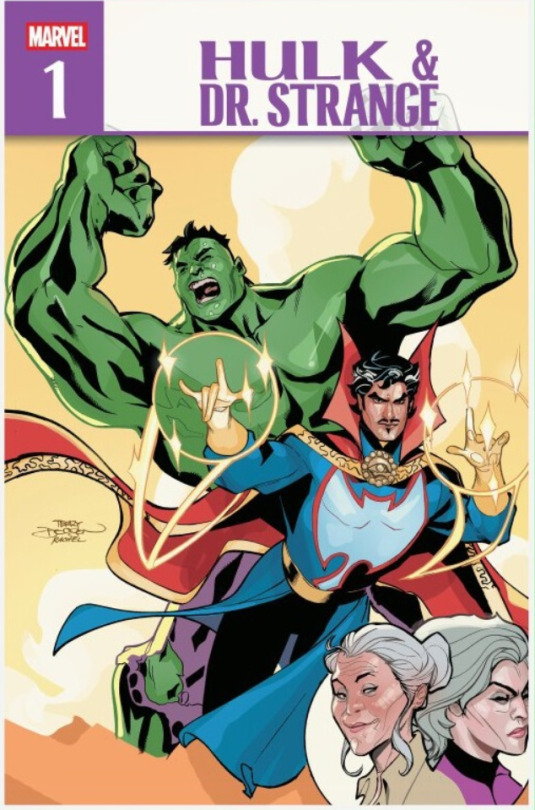
Coming next May!
BONUS
Incredible Hulk #24

PHILLIP KENNEDY JOHNSON (W) • NIC KLEIN (A/C) • VARIANT COVER BY TBA
MARVEL VS. CAPCOM VARIANT COVER BY BENGUS
MARVEL UNIVERSE CONNECTING VARIANT COVER E BY CHRIS GIARRUSSO
MARVEL UNIVERSE CONNECTING BLUE LINE SKETCH VARIANT COVER E BY CHRIS GIARRUSSO
VARIANT COVER BY DOALY
MUSCLE VS. MAGIC!
The newly returned Bruce Banner leads Charlie to New York City to seek an audience with DOCTOR STRANGE…but are met instead by someone they don’t expect! When a magic rite goes horribly wrong, can Banner put aside his terror of Hulk…and will Hulk put aside his hatred of Banner in order to save them? Leads straight into Incredible Hulk #25, featuring a fan-requested “Hulk Vs.” rematch for the ages!
32 PGS./Rated T+ …$3.99
----
There's also a mention in Kid Juggernaut's reprint series but (SPOILER) that's not the real Stephen so I'm skipping this one.
#doctor strange#stephen strange#clea strange#loki laufeyson#hulk#bruce banner#moon girl#lunella lafayette#devil dinosaur#marvel comics#solicitations
41 notes
·
View notes
Text
2024 reading wrap up

books I read (rereads in green):
Nature Human Nature And Human Difference by Justin Smith
Resurgir curated by Lorenzo Incarbone
Sandman: Overture by Neil Gaiman
The Pornographer by Restif De La Bretonne
Storie Brutte Sulla Scienza by Barbascura X
Only Dull People Are Brillian At Breakfast by Oscar Wilde
A Day Of Fallen Night by Samantha Shannon
The Ballad Of The Reading Gaol by Oscar Wilde
Notes On Camp by Susan Sontag
The Prince And The Dressmaker by Jen Wang
Oh! Il Libro Delle Meraviglie by Leo Ortolani
Dubliners by James Joyce
The Great God Pan by Arthur Machen
Il Grande Ratolik by Leo Ortolani
Emmeline Pankhurst by Mariapaola Pesce and Paola Zanghi
Babel by R.F. Kuang
Carmilla by Sheridan Le Fanu
Her Body And Other Parties by Carmen Maria Machado
The Vampyre by John William Polidori
Passage On The Secret History Of An Irish Countess by J. Sheridan Le Fanu
The Daughtest Of Salem by Thomas Gilbert
Rita Hayworth And The Shawshank Redemption by Stephen King
Gideon The Ninth by Tamsyn Muir
The Mysterious Study Of Doctor Sex by Tamsyn Muir
Apt Pupil by Stepehn King
Harrow The Ninth by Tamsyn Muir
Nona The Ninth by Tamsyn Muir
Miti E Leggende Dei Celti by Mila Fois
A Psalm For The Wild Built by Becky Chambers
The Southern Book Club's Guide To Slaying Vampires by Grady Hendrix
Quando Muori Resta A Me by Zerocalcare
Storie Di Merda by Barbascura X
Richard II by William Shakespeare
The Hobbit by J.R.R. Tolkien
Norse Mythology graphic novel volume 1
Norse Mythology graphic novel volume 2
A Prayer For The Crown Shy
short stories by Charlotte Perkins Gilman
Something Is Killing The Children volume 7
If We Were Villains by M.L. Rio
Life Isn't Binary by John-Meg Barker and Alex Iantaffi
Dream Hunters by Neil Gaiman
My Best Friend's Exorcism by Grady Hendrix
The Hollow Places by T. Kingfisher
L'Idea di Medioevo by Giuseppe Sergi
Due Racconti di Vampiri - shoet stories by Frederick Cowles
The Twisted Ones by T. Kingfisher
What Moves The Dead by T. Kingfisher
The Fall Of The House of Usher by Edgar Allan Poe
The White People by Arthur Machen
The Road - the graphic novel adaptation by Manu Larcenet
The Willows by Algernon Blackwood
A House With Good Bones by T. Kingfisher
What Fiests At Night by T. Kingfisher
The Spirit Bares Its Teeth by Andrew Joseph White
I Have No Mouth And I Must Scream by Harlan Ellison
Interworld by Neil Gaiman and Michael Reaves
L'Importanza di Chiamarsi Oscar Wilde by Licia Cascione and Tommaso Vitiello
Questioni di un Certo Genere by il Post
The Lord Of The Rings by J.R.R. Tolkien
Storia Degli Stati Sabaudi by Andrea Merlotti and Paola Bianchi
I Belli Hanno Rotto Il Cazzo by Barbascura X
Lolly Willowes by Sylvia Townsend Warner
This Is How You Lose The Time War by Max Gladstone and Amal El-Mohtar
Re:Dracula
The Adventures of Amina Al Sirafi by Shannon Chkraborty
Genderqueer by Maia Kobabe
The Forbidden Harbor by Stefano Turconi and Teresa Radice
Sacred Bodies by Ver
Seghe Mentali Cosmiche by Barbascura X
Costituzione by Maurizio Floravanti
Bi by Julia Shaw
Governo by Paolo Colombo
Graveyard Shift by M.L. Rio
A Babbo Morto by Zerocalcare
Fortunately, the Milk by Neil Gaiman
A Dog's Heart by Mikhail Bulgakov
the books I have dnf-ed:
The Last Man by Mary Shelly
Venerdì 12 by Leo Ortolani
The Dreamchatcher by Stephen King
Night Man by Leo Ortolani
La Donna Senz'Ombra by Hugo von Hofmannsthal
#i am really liking these graphic wrap ups storygraph is doing i should start posting them monthly!#anyway here is my entire wrap up of the year#as you can see i completly stopped posting reviews during the year and i would like to slowly implement them again but we'll see#2024 wrap up#wrap up#reading wrap up#bookblr#booklr#reading#book wrap up#books#yearly wrap up#studyblr#uniblr#productivity#journaling
31 notes
·
View notes
Text
Masterlist
House of the dragon

My Queen (Aemond Targaryen x female reader)
Aemond and Rhaenyra's daughter, the reader was extremely close as children and were on the precipice of being betrothed, until reader was forced to move to Dragonstone after Luke took Aemonds eye and when the reader returns for Luke's petition for the driftwood throne, no one could prepare for the tension (mainly sexual lol) between the two. Warnings: mentions of violence, lil angst, incest (uncle & niece), oral sex (m receiving), public handjob, fingering, missionary sex, porn with plot, short slow burn, Aemond is head over heels for you, soft! Aemond.
The Black phone
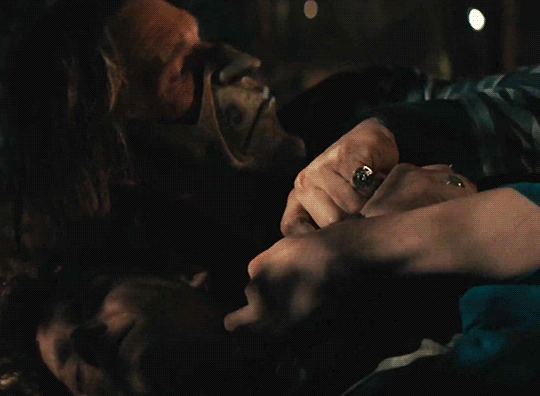
Breed (Albert Shaw/The grabber x Reader)
Why? (Albert Shaw/ The grabber x reader)
P♥r♥o♥v♥e♥ ♥I♥t (Albert Shaw/ The grabber x reader)
Do you believe in magic, Doll? (Albert Shaw/ The grabber x reader)
Fallout
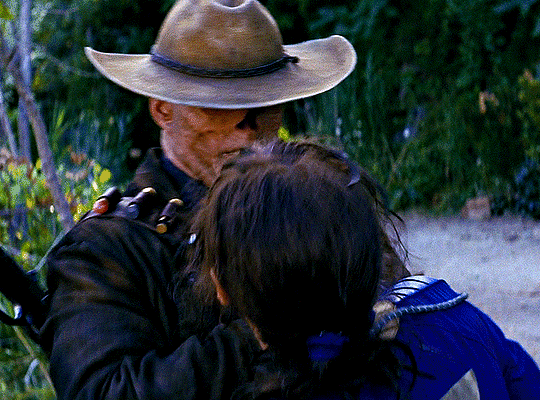
TBA
Game of Thrones

TBA
AHS

TBA
Stardew Valley
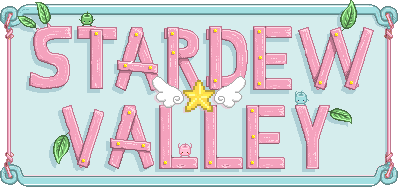
TBA
Vice principals
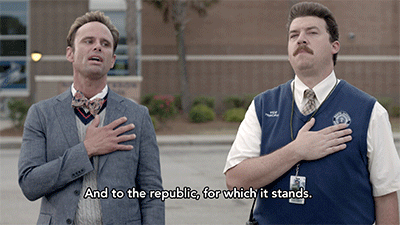
Goddamn it Gamby! (Lee Russell x AFAB reader)
Be mean to me (Lee Russell x female reader)
#cooper howard#cooper howard x reader#lucy maclean#walton goggins#lee russell#fallout#ahs fandom#stardew valley#vice principals#the black phone#the grabber x reader#hotd#got#game of thrones#aemond targaryen x reader#aegon ii targaryen#rhaenyra targaryen
67 notes
·
View notes
Text


#the things you find out when writing styx fic#styx#styxposting#styx band#tommy shaw#dennis deyoung#i was always curious as to why tommy- the youngest guy in the band at the age of 23/24- was calling someone else ''young man''#thanks wikipedia this song is gonna hurt thrice as much now <3#also styxblr since you're new to me as a writer i just wanna make a disclaimer it literally takes me years to write stuff#and i'm not even joking#SOMETIMES I DO FINISH STUFF IN A WEEK OR A MONTH BUT IT'S E X T R E M E L Y RARE#as much as i would like to be that quick that's just not how my artistic process works#so when i say shit about what i'm writing pls don't expect within two months eorfnwoernwer i'm sorry
9 notes
·
View notes
Text
Writing Analysis: Cannery Row (Cultural References)
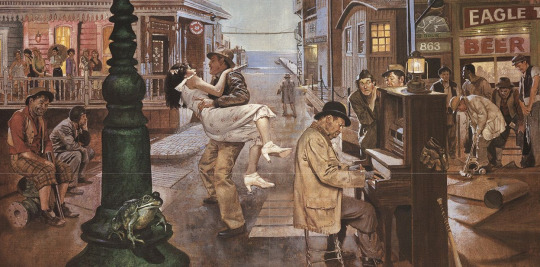
John Steinbeck’s Cannery Row (1945) opens with the following declaration:
“Cannery Row in Monterey California is a poem, a stink, a grating noise, a quality of light, a tone, a habit, a nostalgia, a dream” (1).
Set in a fictionalized version of Cannery Row in Monterey, California, Steinbeck uses his cast of homeless people, drunks and prostitutes to express profound truths about humanity.
Abacus (6): A counting device that was used before the creation of calculators.
Belles-lettres (64): A type of literary work, one that is usually expressed in essays, poetry and deals with intellectual subject matter.
Beret (123): A soft hat that has no bill and no brim. Often worn in the military.
Billings, Josh (61): The pen name for Henry Wheeler Shaw, a respected humorist of the 20th century.
Black Marigolds (171): A poem written by E. Powys Mathers.
Bloomer League (140): A baseball league that was comprised primarily of women that started during the early 1900’s.
Carborundum (90): Another name for silicon carbide, which is the sole chemical compound of carbon and silicon.
Chalmers (154): A type of car that was created and sold during the early 1900’s.
Chorea (144): An illness that causes involuntary movement in various parts of the body.
Collier’s (magazine) (139): Founded by Peter Collier, Collier’s Once a Week debuted in 1888 and went on to become one of America’s most popular magazines.
Count Basie (114): A prominent figure during the swing period of jazz, as well as a good example of big band style.
Dadaist (122): An artist or a writer who practiced Dada, a movement that rejected traditional art and contemporary culture.
Daisy Air Rifle (104): A brand of rifle created by the historic Daisy company.
Distemper (134): An infection in dogs that can be diagnosed through symptoms of a runny nose, poor appetite, and coughing.
“Fighting Bob” (111): A reference to Robert M. La Follette Sr. fight against Washington and other politicians who choose to enter WWI.
Ford Model T (61, 106): A truck built by Ford Motor Company.
The Great Depression (16): A result of the 1929 stock market crash, which left many Americans without money or jobs.
Great Fugue (163): A musical work by Beethoven.
Goiter (97): The enlargement of the thyroid gland.
Influenza (89): An infection more commonly known as the “flu.” It was responsible for claiming the lives of millions worldwide before effective vaccines were created to treat and prevent it.
Knights of Columbus (130): A Catholic organization that seeks to aid family members within the organization who are in financial need.
Knights Templar (130): A group of knights who originated in Jerusalem during the year of 1119. Though shrouded in mystery, the Knights Templar are believed to have protected the Holy Grail.
Laudanum (107): A mixture of opium and derivatives of alcohol.
Masonic Lodge (104): A meeting place for Freemasons or former Freemasons.
Mastoids (89): The skull bones that house the ear.
Mastoiditis (90): Mastoiditis occurs when an infection in the middle ear spreads to the mastoids and then causes an infection that produces fevers and headaches.
Monteverdi’s Hor ch’ el Ciel e la Terra (119): A song by the Italian musician Claudio Monteverdi, who lived in the 16th and 17th century.
Novena (88): A prayer that is said over a nine-day period that requests a special favor from God.
“Panama Pacific International Exposition of 1915” (111): The 1915 Worlds Fair that was held in San Francisco, California.
Petrarch (119): A famous writer of the 14th century who is credited with being the founding father of Humanism.
Point Lobos (64): A state reserve on the central coast of California in Monterey County.
Prohibition (72): A move by the United States government to reduce the amount of alcohol consumed in the United States through limiting individuals and businesses who sold alcohol.
Purse Seiners (67): Fishing boats equipped to fish with a purse seine, a kind of fishing net.
“Remember the Maine” (111): The sinking of the U.S.S. Maine, which was the catalyst for the Spanish-American War.
Rimbaud (124): A 19th century French writer who is most remembered for his contribution to the symbolist movement.
Robert Louis Stevenson (61): A Scottish author who is most famous for works such as Treasure Island and The Black Arrow.
Saturnalia (112): The week of December 17th-23rd during which a feast was held by the Romans to celebrate their dedication Saturn’s temple.
Scarlatti (129): Last name of Giuseppe Domenico Scarlatti, an Italian harpsichordist born during the 17th century who later moved to Spain and continued to practice music there.
Sculpin (135): A kind of small fish.
St. Francis (of Assisi) (144): A saint in the Catholic church who is known for his great love for God, animals, and the sick.
Treasure Island (64): A book written by Robert Louis Stevenson.
Vaudeville (109): A form of American variety entertainment that marked the beginning of popular entertainment as a lucrative business.
“White Sale” (103): A sale either of household goods, or when a store drastically reduces their prices for a short period of time.
Source ⚜ More: Writing Notes & References
#cannery row#john steinbeck#literature#writing analysis#writeblr#langblr#studyblr#writers on tumblr#writing prompt#poetry#spilled ink#dark academia#writing reference#poets on tumblr#writing inspiration#writing ideas#creative writing#writing inspo#writing resources
27 notes
·
View notes
Text



T. E. Lawrence’s letter to Charlotte Shaw, 28.09.1925
32 notes
·
View notes